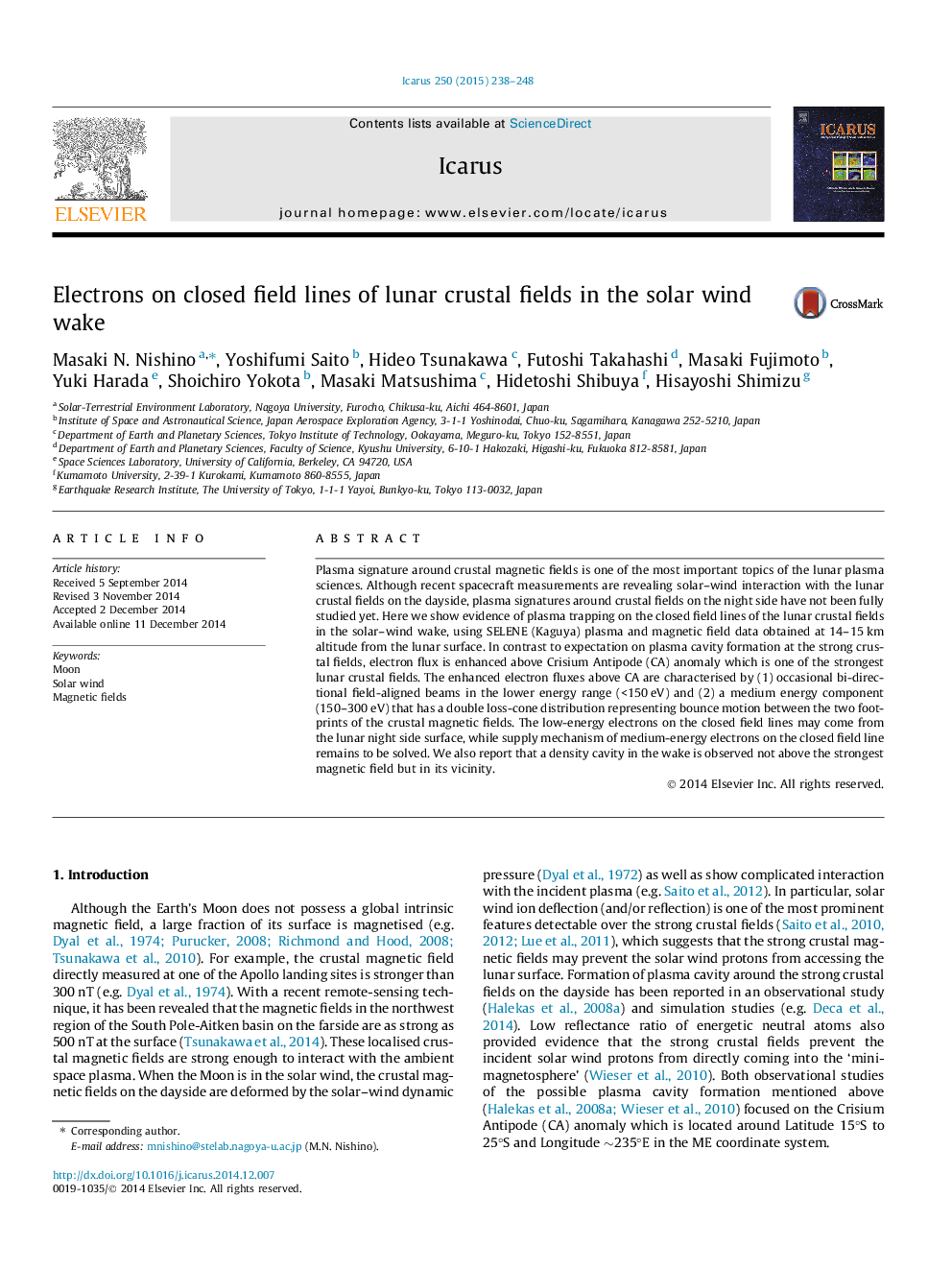| Article ID | Journal | Published Year | Pages | File Type |
|---|---|---|---|---|
| 8136791 | Icarus | 2015 | 11 Pages |
Abstract
Plasma signature around crustal magnetic fields is one of the most important topics of the lunar plasma sciences. Although recent spacecraft measurements are revealing solar-wind interaction with the lunar crustal fields on the dayside, plasma signatures around crustal fields on the night side have not been fully studied yet. Here we show evidence of plasma trapping on the closed field lines of the lunar crustal fields in the solar-wind wake, using SELENE (Kaguya) plasma and magnetic field data obtained at 14-15Â km altitude from the lunar surface. In contrast to expectation on plasma cavity formation at the strong crustal fields, electron flux is enhanced above Crisium Antipode (CA) anomaly which is one of the strongest lunar crustal fields. The enhanced electron fluxes above CA are characterised by (1) occasional bi-directional field-aligned beams in the lower energy range (<150Â eV) and (2) a medium energy component (150-300Â eV) that has a double loss-cone distribution representing bounce motion between the two footprints of the crustal magnetic fields. The low-energy electrons on the closed field lines may come from the lunar night side surface, while supply mechanism of medium-energy electrons on the closed field line remains to be solved. We also report that a density cavity in the wake is observed not above the strongest magnetic field but in its vicinity.
Keywords
Related Topics
Physical Sciences and Engineering
Earth and Planetary Sciences
Space and Planetary Science
Authors
Masaki N. Nishino, Yoshifumi Saito, Hideo Tsunakawa, Futoshi Takahashi, Masaki Fujimoto, Yuki Harada, Shoichiro Yokota, Masaki Matsushima, Hidetoshi Shibuya, Hisayoshi Shimizu,
